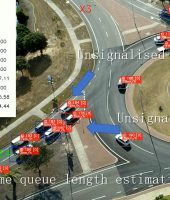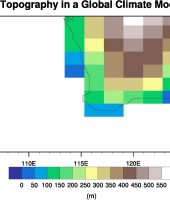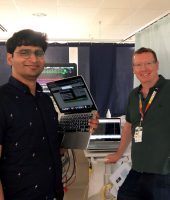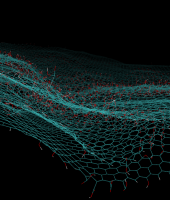Breakthroughs in Global Climate Prediction
Dr Marcus Thatcher from CSIRO’s Ocean & Atmosphere Flagship is using the petascale power of the Pawsey Supercomputing Centre to create the most detailed single global climate run undertaken in Australia.
The project explores new techniques that can help future research in high resolution climate models, as well as deliver practical benefits in areas such as extreme rainfall prediction, improved extreme weather management plans and developing better renewable energy technologies.
THE CHALLENGE
“Essentially the problem is resolution,” says Dr Thatcher. “Every time we halve the resolution, such as going from a 100km to 50km grid, the computational cost increases by roughly eight times.”
However, these smaller grid sizes can produce vastly more accurate simulations due to better resolving key atmospheric processes, making them extremely valuable for research.
“Even though our computing is getting better all the time, the resources we need are enormous. It is very, very expensive in terms of computing to keep increasing resolution on a global model,” says Dr Thatcher.
“You definitely need more powerful computers, because the computational problem you’re trying to simulate – weather behavior that occurs over minute or second timescales being simulated over years or decades – generates a massive mismatch in timescales.”
THE SOLUTION
Dr Thatcher is using CSIRO’s Cubic Conformal Atmospheric Model (CCAM) to experiment with different strategies to connect ocean and atmosphere models on the Pawsey Supercomputing Centre’s petascale Magnus supercomputer. Magnus is the most powerful public research supercomputer in the Southern Hemisphere, providing Dr Thatcher with the raw computing power to run these high-resolution simulations.
“The big advantage with CCAM’s design is it scales very well – meaning you can adapt it to the computing resources that you have. If you have a small computer, you can ‘shrink’ it down to match, and similarly if you have a powerful computer you can expand it fairly easily,” says Dr Thatcher.
Due to this scaling, and Magnus’ efficient architecture, Dr Thatcher is able to achieve internationally competitive results using a fraction of the compute size and cost traditionally required.
“We got performance that was not only competitive in terms of simulating many years at a time at a very high resolution, but we were also able to achieve this on the order of 10-20,000 cores whereas overseas groups are using 200,000 cores.”
“Pawsey also helped in terms of configuring the machine, with optimisation tools and on the file I/O side. You can do a lot of calculations quickly, but there’s almost no point if you can’t get your output down on disk so you can see the results.”
OUTCOME
Using CCAM and the power of petascale supercomputing, Dr Thatcher was able to produce the most detailed single global climate run in Australia.
“We were able to achieve a 13km resolution at 5 simulation years per day, which is up there with the best of them.”
Being able to model these high resolutions over a long timescale can bring a range of practical benefits for Australia.
These include more accurate methods for extreme weather prediction, which can lead to improved management and protection strategies.
The project also benefits the work being done on renewable energy .
“These technologies are strongly affected by the climate, and more accurate modeling means you can design these systems to more reliably deliver energy into cities despite the fluctuations due to weather.”
Dr Thatcher says the Pawsey Supercomputing Centre’s petascale resources and the results of this project are a “step change” in climate modeling.
“This was all possible because of this level of computing power.”
Project Leader.






